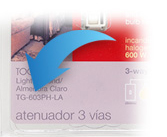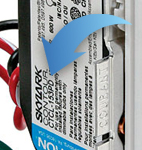
Explore Knowledge Articles
What is Homeworks Illumination?
What is Homeworks Illumination?
Homeworks Illumination was the predecessor system to Homeworks QS and QSX. It was designed as a 1-to-1 upgrade from the system before it, Interactive, allowing them to share most of their devices without a need to swap (Similar to the RadioRA 2 to RadioRA 3 upgrade). While there is a way to keep some of the legacy devices from Illumination up to our modern-day systems, there is a heavy difference in the way it was programmed and how it's devices were connected. For more information on the upgrade process, please see the following links:
For Upgrading to Homeworks QSX, Application Note 840
What Kind of Devices were used?
A large difference between Illumination and the modern Homeworks systems are the types of devices used. While Modern day systems have their devices classified as two different types, Wired or Wireless, Illumination separated multiple Wired devices to their own links. Below we'll review the devices used, and comparison to modern devices.
RPM Panels
RPMs were the previous versions of the LQSE Din-rail modules. These may seem familiar as they were used with Homeworks QS quite heavily before the Din-rail modules came around to offer a more LED-friendly solution. The Main difference between the two is while Din-rail Modules are self-contained (Meaning you can attach one to a QS link with no extra interfaces), the RPMs required a 'brain' to communicate to the system. This 'brain' was the MI, or Module Interface, located in the bottom right corner of their panel. These units did not use serial numbers to address/activate to a system. Each RPM had a dial wheel that can be rotated to assign it a number, and each MI had a set of DIP switches to set its address.
- Dimmers
Dimmers in Illumination came in two types; Wired and Wireless. Wireless dimmers functioned and behaved exactly as the modern Maestro dimmers from QS and QSX. The wired dimmers, however, come in two styles and required a 'board' to translate their communications to them. Wired Maestro and Vareo dimmers share the same installation method as current Maestros, except they have an extra two wires for communication. These two wires would land back at either a D48 (For Vareo) or H48 (For Maestro) board. Similar to the MI from above, this was the 'brain' of these dimmers, translating the commands from the processor and sending them to the correct dimmer attached to it.
- Shades
Illumination used a different type of shades known as Sivoia QED shades. These shades are similar to the modern QS shades, but have some key differences. Most importantly, they used 7-conductor wire to power and communicate to their Shade Panel, and ran off of 24VDC instead of 35VDC. They also required an interface or 'brain' to communicate to Illumination systems. This was known as the Q96 Interface, which acted as both a translator and storage for the activation/addressing data for the shades regarding the system.
- Grafik Eye/Wallbox Power Modules
These devices have not changed much in terms of appearance or installation from Illumination to the modern systems. They primarily acted as a multi-dimmer control in a smaller wallbox than individual dimmers would take up. The major difference is these used their own link compared to keypads or other devices, whereas modern-day versions of them can be paired to any QS or RF link.
- Contact Closure Interface
These boards were used as a way of integrating with Contact-Closure control when a keypad was not able to be used. They consisted of 9 Contact Closure Inputs, an IR input, and connected to the Keypad link of the processor. It functions similar to the QSE-IO, but without the Contact Closure Outputs.
- Keypads
The Illumination Keypads are identical to the currently available wired keypad models such as the Seetouch, Architrave, and Signature series models, The biggest difference are the way the keypads were addressed; Instead of using their serial numbers, each keypad had a row of DIP-switches to assign them an address on the system.
How does Integration work?
Homeworks Illumination Integration commonly consisted of RS-232 connection to the Integrators hub. This provided an integration method similar to our Telnet integration in Homeworks QS, but without the need of Static IPs or Logins. It's commands were different from current systems, as they did not display serial numbers for devices. It displayed the Address of the device. This varies for different device types, which will change what address information is shown. For a full list, please see Page 14 of the Integration Guide: RS-232 Command Set.
What Program is used to program the system?
Homeworks Illumination was programmed using it's own design software. If you are Homeworks Certified, you can access this software from our Legacy Products page: Legacy Products (lutron.com). Do note that you will not see the download link for the software until you sign in using the "Register or Login to myLutron" link at the top of the page.
This software relies on two different ways to communicate with the processor: RS-232 serial connection (Direct Connection), or via Ethernet IP communication. RS-232 is the most stable communication method but may be a bit more difficult to set up. You will need to ensure your Serial Settings on the computer match the settings in Illumination software for communication to work properly. Ethernet is sometimes the easiest to establish communications if the network is using a basic router and your computer is hardwired to the same router.
For more details on connecting to a processor, please see the included Help Document within the Illumination software 1.65 from Help > Homeworks Help document.
Was there an app for this system?
Homeworks Illumination was able to use the legacy app called "Lutron Home Control Plus". It provided local control for free with the app, and at one point required a subscription fee to access the system remotely. These services were made free towards the end of its support and has since been in maintenance mode only. The app is no longer supported, or available, on Android devices. Setting up the app required the IP address of the processor to connect to, as well as a Telnet Login set up on the processor.


